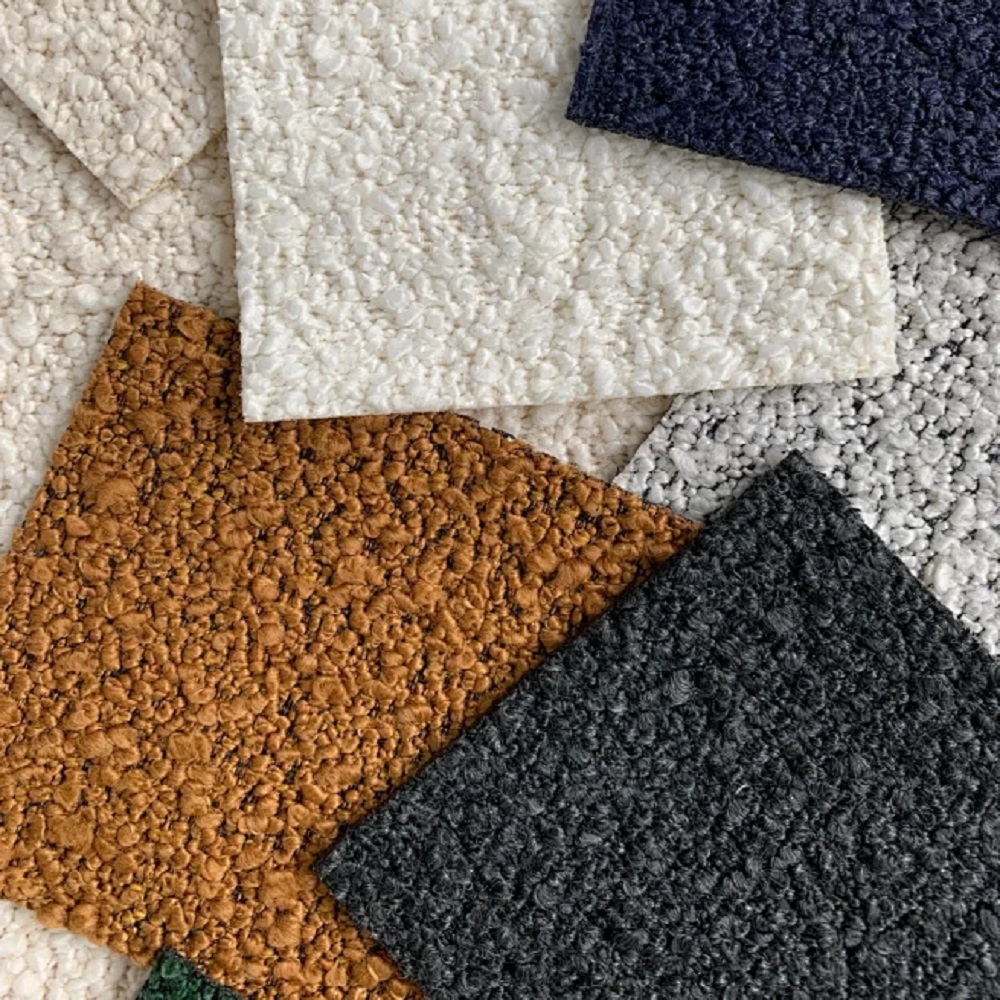Textile Fabric Guide: What Is Sherpa Fabric?

If you’ve ever snuggled under a fluffy blanket or worn a jacket that feels like a soft, warm hug, perhaps you’ve experienced Sherpa fabric. With its plush, wool-like texture, Sherpa has become a favorite for cozy winter clothes, blankets and even baby items.
But what exactly is Sherpa fabric? How is it made, and why is it so popular? Let’s explore this beloved fabric, from its properties to its unique uses.
What Is Sherpa Fabric?
Sherpa fabric is known for its thick, fuzzy surface that looks remarkably like sheep’s wool. Despite this similarity, it is a synthetic textile designed to provide warmth and comfort without the weight and care demands of natural fleece. Sherpa is commonly made from polyester or blends of polyester with cotton or acrylic, giving it a soft yet durable feel.
Its fluffy pile traps heat effectively, making it ideal for chilly weather. Because of these qualities, Sherpa is often used as the lining in jackets or the surface of blankets that offer both style and function.
Key Features of Sherpa Fabric
Sherpa fabric’s popularity comes from a handful of impressive features:
Softness: The fabric’s plush texture is gentle against skin, making it perfect for loungewear and baby products.
Warmth: Sherpa offers excellent insulation while remaining lightweight, so you can stay cozy without feeling bulky.
Durability: With proper care, Sherpa resists wear and maintains its softness over time.
Easy Maintenance: Many Sherpa items can be machine washed, making them practical for everyday use.
Versatility: Available in a variety of solid colors and thicknesses, Sherpa can suit many different styles and needs.
How Is Sherpa Fabric Made?
The production process of Sherpa fabric is very delicate, starting with spinning the fiber (usually polyester) into yarn, which is then woven into a base fabric. Afterwards, the surface undergoes brushing and shearing to create the signature fluffy pile.
The fabric is often backed by a smooth knit or woven layer to provide strength and shape. Dyeing and finishing steps complete the process. Many manufacturers, especially well-equipped fabric factories in China, produce Sherpa on a large scale, combining quality with prices in the global market.
Types of Sherpa
Sherpa fabrics vary based on fiber composition and intended use:
Polyester Sherpa: The most common, known for durability and low cost.
Cotton-blend Sherpa: Offers enhanced breathability and softness, great for garments worn close to the skin.
Acrylic Sherpa: Lightweight and soft but generally less durable.
Wool Sherpa: More natural and eco-friendly but less widely available and higher priced.
Choosing the right Sherpa type depends on your product needs, from outerwear to baby accessories.
Common Uses
Due to its comfort and warmth properties, Sherpa is used in many product categories:
Clothing: Hoodies, jackets, vests, hats and gloves often feature Sherpa linings or outer layers.
Home Textiles: Blankets, throws, pillow covers, and even robes benefit from Sherpa’s cozy feel.
Baby Products: Swaddles, sleep sacks, and soft blankets use Sherpa for gentle warmth.
Pet Accessories: Pet beds and jackets incorporate Sherpa to keep furry friends snug.
Pros and Cons
Pros: Excellent warmth and comfort, Lightweight and soft texture, Affordable and widely available, Easy to care for and maintain
Cons: Less breathable than natural fabrics, Can pill or lose loft with extended use, Synthetic fibers raise environmental concerns, May trap odors if not cleaned properly
Understanding these factors helps in making informed decisions about whether Sherpa suits your specific applications.
How to Care for Sherpa fabric
To extend the life of your Sherpa and keep it looking and feeling its best, it’s important to follow some simple care tips:
Machine wash on a gentle cycle using cold water — avoid using hot water to prevent damage.
Whenever possible, air dry naturally instead of using a high-heat dryer to maintain the fabric’s fluffiness.
Use fabric softener to reduce static and prevent the fibers from matting together.
Store Sherpa items without heavy pressure on top to preserve their plush texture.
Proper care helps Sherpa maintain its softness and warmth for many seasons to come.
Conclusion
Sherpa fabric’s softness, warmth, and affordability have made it a popular choice for fall and winter apparel as well as home textiles. From everyday jackets and cozy blankets to baby swaddles and pet beds, Sherpa is everywhere, offering comfort with style.
We supply different wholesale fabric materials to help you find the best fabric for your projects. If you want to explore fabric comparisons or learn more about eco-friendly material options, be sure to follow our ongoing fabric series here on the blog.
Working With Facto Textile
We promise you:
- A wide variety of high- quality fabrics
- Full range of customized services
- Professional production technology
- Sincere Cooperation
Contact Us To Start Your Fabric Project
Please send us your message, we will reply within 20 hours.
